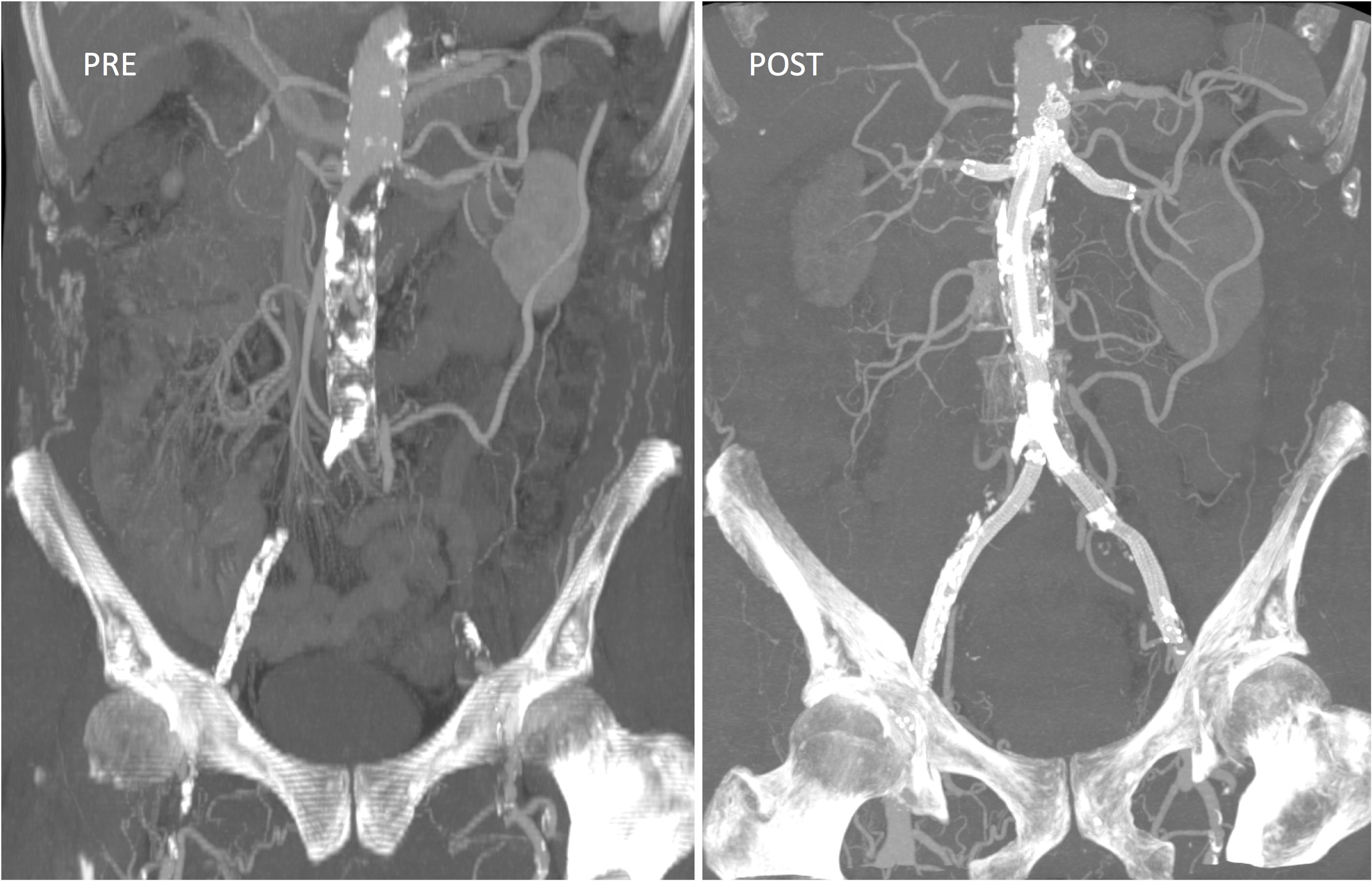Endovascular Recanalization of Chronic Juxtarenal Aortoiliac Occlusions Utilizing Adjuvant Renovisceral Protection Maneuvers
Oluwafunmi Awonuga, M.D., Nathan Orr, MD, Sibu Saha, MD, David Minion, MD.
University of Kentucky, Lexington, KY, USA.
OBJECTIVES: Chronic juxtarenal aorto-iliac occlusions are generally considered a contraindication to endovascular revascularization because of concern for atheroembolism to renovisceral vessels. To overcome this limitation, we have adopted a technique utilizing balloons or parallel endografts in renovisceral vessels for protection during aortic recanalization. The purpose of this study is to review our experience with this strategy for treating chronic juxtarenal aorto-iliac occlusions.
METHODS: A retrospective review of all consecutive patients undergoing endovascular recanalization for chronic juxtarenal aorto-iliac occlusions at our institution was performed. Patients were excluded if there was at least 5 mm of relatively disease-free infrarenal aorta or if angioplasty/stenting was used as an adjuvant to thrombolysis or thrombectomy for acute/subacute occlusions. The majority of patients had reno-visceral covered stents placed from left axillo-brachial access and bilateral kissing iliac covered stents placed from femoral access and extended into the disease-free suprarenal aorta in parallel fashion, which we call the Pipeworks configuration. (Figure)
RESULTS: Fourteen patients met criteria for inclusion. Average age was 59 years (Range: 40-87). Ten were male. Two had prior side-to-end aorto-bifemoral bypass and multiple failed revisions. Three had been declined intervention at outside facilities because of co-morbidities. Twelve patients were treated using a Pipeworks configuration. Of these, five cases involved three parallel stents (two iliac and one renal), six cases involved four (two iliac and two renals), and one case involved five (two iliacs, two renals, and one SMA). Another case utilized an aortic stent and bilateral renal and iliac stents. One patient underwent angioplasty alone. Technical success was 100%. Follow-up ranged from 1 to 57 months. All aorto-iliac stents have remained patent. One renal stent occluded and was discovered at the initial post-operative scan. In retrospect, the parallel stents were not extended proximal enough to a disease-free segment. There were no peri-operative deaths. Median post-operative length of stay was one day.
CONCLUSIONS: Endovascular recanalization of chronic juxtarenal aortic occlusions can be performed safely using adjuvant renovisceral angioplasty or stents for protection against atheroembolization. Mid to late outcomes in this small cohort suggests comparable durability to more standard aorto-iliac stent outcomes.

Back to 2017 ePosters




